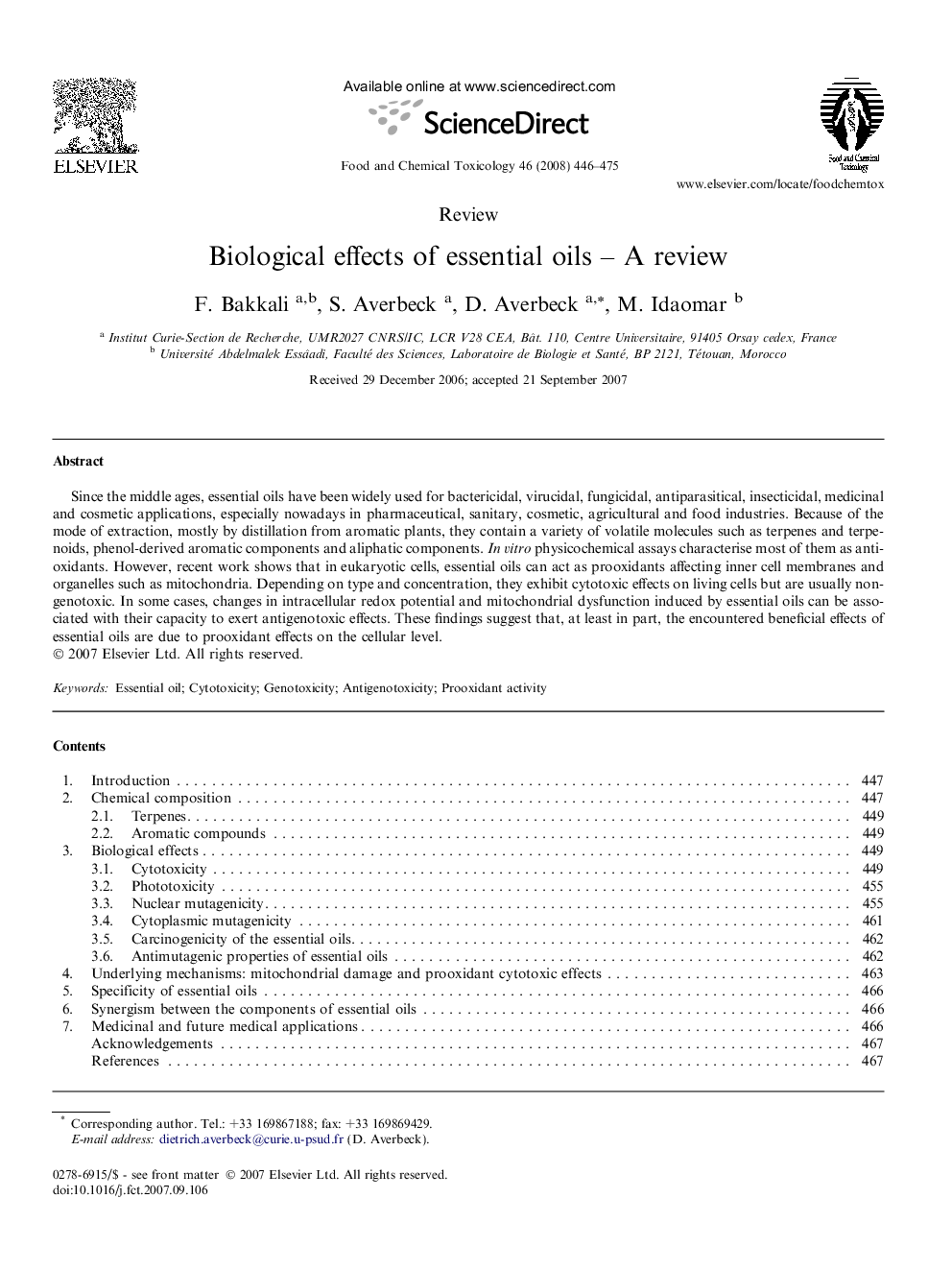| Article ID | Journal | Published Year | Pages | File Type |
|---|---|---|---|---|
| 2587086 | Food and Chemical Toxicology | 2008 | 30 Pages |
Since the middle ages, essential oils have been widely used for bactericidal, virucidal, fungicidal, antiparasitical, insecticidal, medicinal and cosmetic applications, especially nowadays in pharmaceutical, sanitary, cosmetic, agricultural and food industries. Because of the mode of extraction, mostly by distillation from aromatic plants, they contain a variety of volatile molecules such as terpenes and terpenoids, phenol-derived aromatic components and aliphatic components. In vitro physicochemical assays characterise most of them as antioxidants. However, recent work shows that in eukaryotic cells, essential oils can act as prooxidants affecting inner cell membranes and organelles such as mitochondria. Depending on type and concentration, they exhibit cytotoxic effects on living cells but are usually non-genotoxic. In some cases, changes in intracellular redox potential and mitochondrial dysfunction induced by essential oils can be associated with their capacity to exert antigenotoxic effects. These findings suggest that, at least in part, the encountered beneficial effects of essential oils are due to prooxidant effects on the cellular level.
